2014 Sport-Touring Final SmackDown + Video
The Long-Awaited BMW R1200RT takes on The World!
The BMW we really wanted to take along for our epic sport tour to Yosemite back in July was the company’s new R1200RT, but a batch of faulty rear shock shafts on the ESA models put the kibosh on that, so we wound up taking the K1600GT instead. The big six-cylinder is a great bike in its own right, but really falls more into the touring camp than the sport-touring one. Not that that kept us from declaring it the winner. We’re fickle that way. But based upon our own Tom Roderick’s impressions of the RT on his introductory ride way back in April, we went ahead and named it our Sport-Tourer of the Year, anyway. So, there was really no pressure on the new BMW; it was all on Roderick, who responded in his usual way by setting off to down the easiest target first.
What with EICMA coming up and everything, there was really no time for a Yosemite run: Instead of Half Dome, we had to settle for Salvation Mountain. The Salton Sea is a reasonable facsimile of Mono Lake, and the olfactory ambiance provided by the Mecca II Sanitary Landfill was close enough to a ride through L.A.
Moto-Guzzi Norge GT 8V
We hadn’t ridden the old Norge since Tommy-boy reviewed it in 2011, (though Troy S. took it for a shakedown cruise last week) so it seemed like a good time to take it for a spin, though nothing much has changed with the Moto Guzzi. The Norge’s architecture of a twin-cylinder motor in a shaft-driven chassis is shared with the RT, but it was difficult to imagine the old girl prevailing against the very latest fly-by-wire electronic wonderbikes from Japan and Germany. But it’s a Guzzi; everybody wants to ride it anyway.
Tom took the first shot: “The Norge has an electrically adjustable windscreen, ABS and heated grips, but that’s the end of the technological road. I can live without a heated seat, but cruise control and electronically adjustable suspension are indispensable creature comforts in modern day touring rigs … for only $600 less than the Yamaha, it needs a lot more than that to keep up with the Joneses. If Guzzi dropped the price to around $15K, I could then justify purchasing the Norge out of this trio.”
Personally, I think the price would have to go lower than that before we Analog People might be able to talk ourselves into the Guzzi. Suspension’s not the only area where the Norge falls behind. As ever, you have to love its 1151cc 90-degree V-Twin, but in the Norge, the Italians have civilized it all the way down to just 86.4 horsepower at 7000 rpm, from the 95 it makes in the Griso 8V. Meanwhile, the other Twin in this test is making 110 horses up top, along with 10 more foot-pounds of torque than the Guzzi, at fewer rpm.
The Norge is nice and mellow, though, and we all agreed it has the comfiest seat of the three; it’s carved from the same foam they use on the back of Lady Gaga’s thighs. If your inseam is 30 inches or less, Norge ergos are sweet indeed. If you’re taller, the footpegs are a bit too high and forward. For cool-weather riding, its electric-adjust windscreen provides the least coverage, though you can get a decent still-air pocket for your helmet most of the time. And no cruise control is now inexcusable on an S-T rig, though there are inexpensive aftermarket solutions that make the situation bearable.
The Guzzi also falls short in the luggage department. You have to deal with not one but two fiddly latches per bag every time you want in. “The saddlebags are the antithesis of proficient,” Tom says, “someone get Miguel Galluzzi involved immediately!” They are better than no saddlebags, but you have to deal with not one but two fiddly latches per bag every time you want in. Nor does the Guzzi give you any storage in the fairing, or a 12V outlet, like the other two bikes.
As for the electronic-adjust suspension, I could almost be in the camp that doesn’t really require it. In our Super Streetfighter Smackdown back in April, the manual-adjust KTM Super Duke beat the electronics-rich BMW S1000R, proving in the process that, if you get the suspension right to begin with, there’s not much need to be adjusting it all the time: Twisting the Guzzi’s remote preload knob isn’t a terrible inconvenience when you’re taking a chubby friend and your balls bowling a few towns away where you hope no one will recognize you. Most of the time, the Norge’s suspenders are nice and cushy on the superslab, while surprisingly firm enough and confidence-inspiring enough in the rough stuff to run with the other bikes.
The funny thing about the Norge is, in spite of all its shortcomings on the spec and dyno charts, it never seemed to have any trouble keeping up with the group, whether it was climbing the tight south grade up Mt. Palomar or unscientifically testing top-gear roll-on performance under the watchful eye of the California Highway Patrol on what we thought was a deserted desert highway. (Brasfield and Tom will be sending one very compassionate CHP officer a fruitcake this year and a nice Christmas card.) The Guzzi packs a lot of oomph into each chug, and if you’re behind it wringing the FJR’s 127-hp neck up a winding road, it’s hard to understand why you’re not gaining any ground.
“The Guzzi’s surprisingly competent in terms of performance,” says Tom, “it’s quick in an underwhelming way.” It will start to grind away its centerstand, and its old-fashioned cables are a little less fluid than the electronic-throttled bikes, but it’s never a problem. And its dual Brembo-clamped discs up front give up absolutely nothing to the other bikes, including ABS.
Guzzi can play the modern game; witness the excellent California 1400. The Norge is unabashedly retro and good at it; if you only listen to vinyl through a tube amplifier while clamping a meerschaum pipe in your hipster-bearded mouth, it’s your sporty tourer. Especially if you want to do your own maintenance.
+ Highs
- Seatus maximus
- 90-degree V-Twin character and a smooth 5000-rpm, 90-mph cruise
- Do your own maintenance
– Sighs
- No cruise control, seriously?
- Cramped legroom for tall guys
- Defunct luggage
Yamaha FJR1300ES
That’s ES for Electronic Suspension, which the FJR1300 got last year and used to trounce the Triumph Trophy SE and Kawasaki Concours last April, finishing second only to the way pricier K1600GT. The Yamaha’s real competitor, though, is the R1200RT. The FJR makes 17 more hp than the RT, but weighs 27 pounds more. It makes 10-percent more torque, but not till 1400-rpm higher in the rev band.
Twenty-seven pounds really isn’t much, and both bikes carry 6.6 gallons of fuel – about 40 pounds – but we never encountered a situation where the FJR feels anywhere near as light and agile as the BMW. Part of it has to do with the boxer’s cylinders poking out sideways like Flying Wallenda balance poles, part of it has to do with its longitudinal crankshaft. The big FJR four-cylinder crank’s stroke is only about 7mm shorter than the BMW’s more oversquare twin-cylinder one, and that heavy, spinning mass wants the FJR to continue on in a straight line. Its 2.3-inch longer wheelbase doesn’t help it any.
The FJR’s not really a heavy-steering bike at all (it won the Handling category in round One of this comparo), but it seems that way when you hop onto it off the BMW. The FJR’s handlebars are a bit narrower than the BMW’s, you lean a little farther forward to get to them – and its overall ergonomics are a bit sportier than the BMW’s. Sportier in this case, means not quite as comfortable and controllable.
“The narrowness of the FJR’s bars don’t provide the same leverage you get with the BMW or Guzzi,” Tom Roderick says, “and it’s also wide between the knees, too wide for my tastes, feels as though I’m riding a horse.”
Evans Brasfield still loves the FJR, but agrees its electronic suspension can’t quite hang with the BMW’s ESA: “The FJR’s adjustable suspension is outclassed by the BMW’s Dynamic ESA. It’s particularly noticeable when the chassis gets upset by getting unweighted by a bump entering a corner. The RT handles this situation with much less drama.”
If you fly up and down the Autobahn a lot over 100 mph, the FJR’s extra horsepower and more aggressive ergos will serve you well. Here in the U.S., not so much. Progress happens. Yamaha has done a fantastic job integrating electronic suspension, fly-by-wire, traction control, cruise control and a highly sophisticated cockpit onto the FJR. But the fact remains this platform is now 13 years old. Okay 14.
The good news if you want an FJR is that the FJR1300A has all the bells and whistles except electronic suspension, for a thousand bucks less, $15,890, making it the low-priced spread in this comparison and an amazing sport-touring bargain no one here at MO would dissuade you from. And you won’t have to stand in line at the BMW dealer, helmet in hand, discussing poetry.
+ Highs
- Inhales great draughts of space (Walt Whitman, you oafs…)
- Bulletproof everything
- All systems seamlessly integrated
– Sighs
- More sporty than toury
- Feels heavy next to the RT
- Needs a downshift to get rolling below 60 mph
BMW R1200RT
Although the FJR and BMW are geared about the same – both turning about 4500 rpm at 80-ish mph – the BMW squirts ahead when both throttles are rolled open in top gear. The FJR makes more power and torque, but the lighter RT hits its 80 lb-ft. peak at just 5400 rpm, where the FJR doesn’t hit its 89 lb-ft. peak till 6800. You feel that immediate response every time you exit a tight corner, too, where the RT uses its wider bars, more upright ergonomics and lighter weight to run the same pace as the FJR with considerably less effort.
“The FJR looks the part of the sportiest sport-tourer here, but it’s really not,” says Tom. “The BMW is faster, has more ground clearance, and is arguably a better-handling motorcycle. Then there’s the Shift Assist Pro, which makes riding the RT quickly through a set tight switchbacks seem as though you’re riding an S1000RR.”
It is nice to be able to swap between Soft, Normal and Hard suspension modes on the fly, but riding along the freeway in Hard is by no means harsh, and swooping along in the curves in Soft didn’t seem the least bit hazardous. Matter of fact I was so busy sampling the two extremes, I don’t recall ever riding along in Normal at all, which I bet might have been just right. Plumping for the Premium Package ($20,850) definitely has its rewards, but if you lean toward the simple life, and could find a base model RT for $17,705, I don’t think you’d be disappointed. Before they invented electronic suspension, the RTs were always great-riding motorcycles. The base bike comes with ABS, cruise control, a 12V outlet up front and a GPS mount – all the stuff you really need.
The $3200 Premium Package on our bike only adds the electronic suspension (Dynamic ESA) and a lot of stuff most riders could do without – except the heated seat! – which doesn’t appear to be a stand-alone option. Am I the only guy who can’t live without a sound system, Hill Start Control and the ability to switch into Enduro Pro, run studded tires, and perform controlled drifts?
My personal financial conservatism aside, little Tommy Roderick is right: If you’ve got the money, the BMW is your honey, so why not spoil her? The accolades pile up:
Evans Brasscannons: “The Beemer’s riding position is the most comfortable of the bunch, placing me in an upright position with a relaxed reach to the bar. The seat’s narrowness makes it seem lower than the FJR’s identical height [both are adjustable between 31.7 and 32.5 inches], which makes pushing the bike backwards out of a parking space a much easier task for my 32-inch inseam.
“The RT’s lightness is noticeable in this crowd, and it feels lighter than the scales indicate. This is massively important at parking lot speeds. Out on the open road, the RT’s responsive steering makes it feel like you can determine its line within a fraction of an inch.
“The engine’s broad torque delivery makes it the most willing of the bunch at any rpm, cleanly walking away in every roll-on test … though some vibration does make its way into the pegs and grips at higher rpm.
“What a revelation the Shift Assist Pro is! At first attempt, downshifting without the clutch feels alien but becomes second nature,” Brasfield sums up.
Tom R.: “At nearly $21k, the RT is $4k more than the FJR, but it’s easily worth the money. The RT disguises itself as a touring bike, but once underway, it makes its sporting intentions known. Light on its feet, the RT makes quick transitioning a breeze.
“The windscreen in high is right in my line of sight, so I rode with it an an inch lower, which only slightly increased wind noise and turbulence. Wind protection for the hands and feet is also excellent.
“Sound quality from the fairing-mounted speakers is clear at freeway speeds as long as the windscreen is up.”
The new Beemer gave up a few points on the official MO Scorecard against the FJR for its price and relative lack of horsepower, but it won every subjective category to easily clinch the win over the FJR. The sun had long set by the time we’d finished eating great food and discussing the finer points at the Lumber Mill Bar and Grill in Idyllwild, 5400 feet up in the mountains where fall was definitely in the air.
Lucky me drew the BMW straw for the ride home. With heated grips and seat set to two bars of five, suspension set Hard and throttle to Road, it was a delicious descent down the dark, winding mountain road through the pines, back into the city lights, back to I-10. Set suspension to Soft, engage cruise control, raise windshield, turn up the Pandora. We’d gassed up in Idyllwild, and the tripmeter clicked over 100 miles as I pulled up to my humble abode. The clock said 10:30. I felt fresh as the proverbial daisy. There is no other land-bound vehicle I would rather have been on or in. Yup, it’s as good as Tom said, and we did the right thing naming the RT Sport-Tourer of the Year.
+ Highs
- Latest Boxer is both grunty and powerful
- Outstanding ergonomics, comfort and luggage
- Spock-level electronic wizardry
– Sighs
- Narrow clutch engagement, with lever all the way out
- Not the most beautiful R-bike is it?
- I got nothing else. Anyone?
| BMW R 1200 RT | Moto-Guzzi Norge GT 8V | Yamaha FJR1300ES | |
| MSRP as tested | $20,850 | $16,290 | $16,890 |
| Engine Capacity | 1170cc | 1151cc | 1298cc |
| Engine Type | Air/liquid-cooled DOHC boxer Twin, 4 valves /cyl. | Air-cooled 90-deg. V-Twin, SOHC; 4 valves/cyl. | Liquid-cooled DOHC inline Four; 4 valves/cyl. |
| Bore x Stroke | 101.0 x 73.0mm | 95.0 x 81.2mm | 79.0 x 66.2mm |
| Compression Ratio | 12.5:1 | 10.8:1 | 10.8:1 |
| Horsepower | 109.8 @ 8300 | 86.41 @ 7000 | 127.2 @ 8100 |
| Torque | 80.1 @ 5400 | 69.8 @ 5700 | 88.7 @ 6800 |
| Fuel System | Fuel injection, ride-by-wire | Electronic fuel injection | Fuel injection, ride-by-wire |
| Transmission | 6-speed | 6-speed | 5-speed |
| Final Drive | Shaft | Shaft | Shaft |
| Front Suspension | Telelever, 37mm fork tubes, 4.7 in. travel; electronic adjustment | 45mm fork, adjustable spring preload; 4.7 in. travel | 43mm inverted fork; electronic adjustment; 5.3 in. travel |
| Rear Suspension | Paralever single shock, electronic adjustment; 5.4 in. travel | Single shock, adjustable spring preload and rebound damping; 5.5 in. travel | Single shock; electronically adjustable suspension: 4.9-in travel |
| Front Brakes | Dual 320mm disc, 4-piston calipers; ABS | Dual 320mm disc, 4-piston calipers; ABS | Dual 320mm disc, 4-piston calipers; ABS |
| Rear Brakes | 276mm disc, 2-piston caliper; ABS | 282mm disc, 2-piston caliper; ABS | 282mm disc, 2-piston caliper; ABS |
| Front Tire | 120/70 ZR17 | 120/70 ZR17 | 120/70 ZR17 |
| Rear Tire | 180/55 ZR17 | 180/55 ZR17 | 180/55 ZR17 |
| Seat Height | 31.7, 32.5 in. | 31.9 in. | 31.7, 32.5 in |
| Wheelbase | 58.5 in. (1485mm) | 58.9 in. | 60.8 in. |
| Rake/Trail | 26.4 deg/ 4.6 in. (116mm) | 25 deg/ 4.7 in. | 26.0 deg/4.3 in. |
| Curb Weight, MO scales | 617 lbs. | 646 lbs. | 644 lbs. |
| Fuel Capacity | 6.6 gals | 6.0 gals | 6.6 gals |
| MPG | 44 | 38 | 41 |
2014 Sport-Touring Final SmackDown Scorecard | |||
|---|---|---|---|
| Category | BMW R1200RT | Moto Guzzi Norge GT 8V | Yamaha FJR1300ES |
| Price | 78.1% | 100% | 96.5% |
| Weight | 100% | 95.5% | 95.8% |
| lb./hp | 91.1% | 68.0% | 100% |
| lb/lb-ft. | 94.8% | 78.5% | 100% |
| Engine | 92.5% | 80.8% | 86.7% |
| Transmission/Clutch | 90.8% | 75.0% | 84.2% |
| Handling | 91.7% | 77.5% | 84.2% |
| Brakes | 90.0% | 84.2% | 89.2% |
| Suspension | 95.8% | 81.7% | 89.2% |
| Technologies | 100% | 70.0% | 90.0% |
| Instruments | 85.8% | 80.8% | 85.0% |
| Ergonomics/Comfort | 95.8% | 83.3% | 84.2% |
| Luggage/Storage | 95.0% | 68.3% | 86.7% |
| Quality, Fit and finish | 93.3% | 75.8% | 91.7% |
| Cool Factor | 85.8% | 80.8% | 81.7% |
| Grin Factor | 87.5% | 73.3% | 82.5% |
| Overall Score | 91.7% | 80.1% | 88.4% |
| Price and weight are scored based on objective metrics. Other scores are listed as a percentage of editors’ ratings in each category. The Engine category is double-weighted, so the Overall Score is not a total of the displayed percentages but, rather, a percentage of the weighted aggregate raw score. | |||
More by John Burns



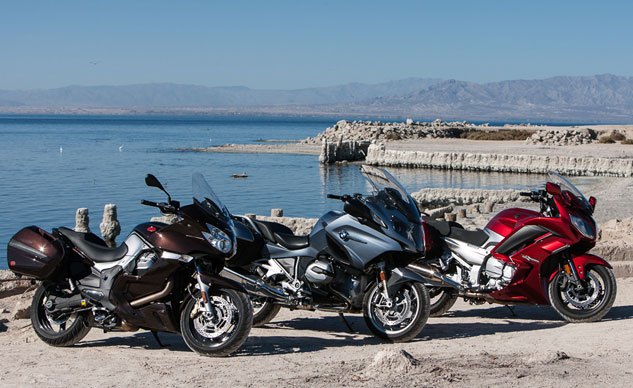
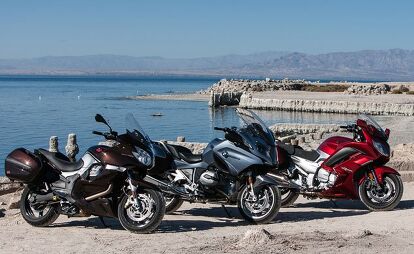
































































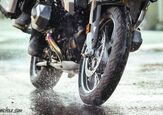
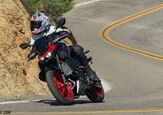
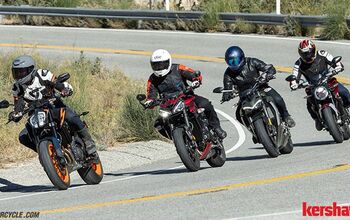
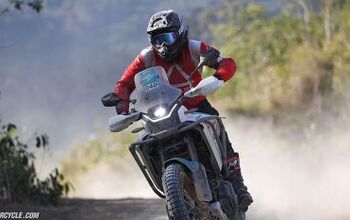

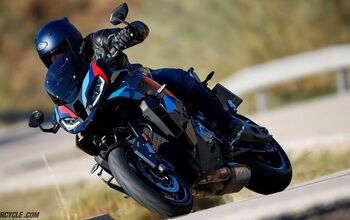
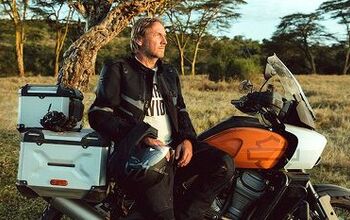

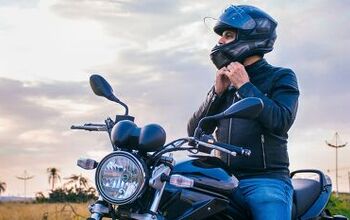

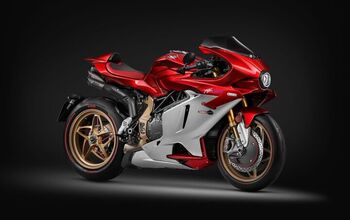
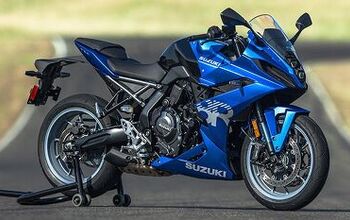
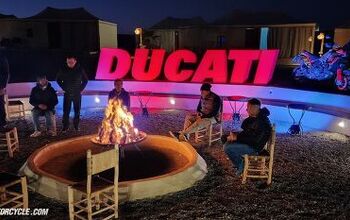
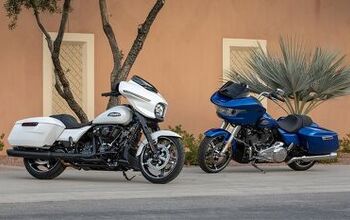
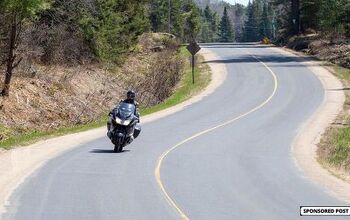
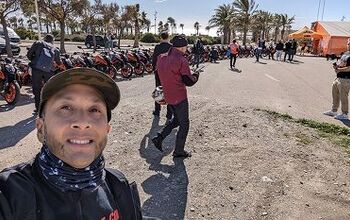
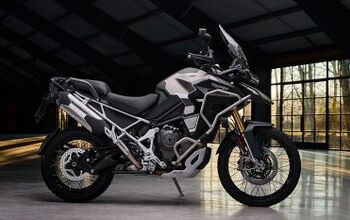
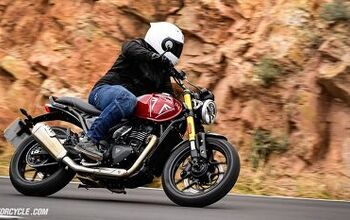
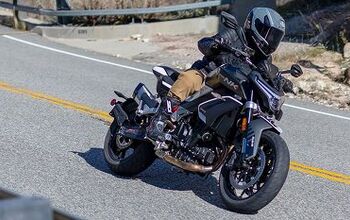
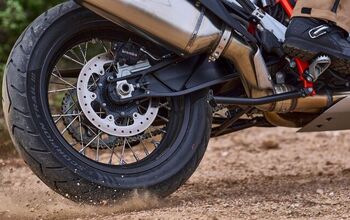
Comments
Join the conversation
Anybody care to revisit the FJR vs RT? It's time for my Gen 1 and I to retire.
I love my Norge!